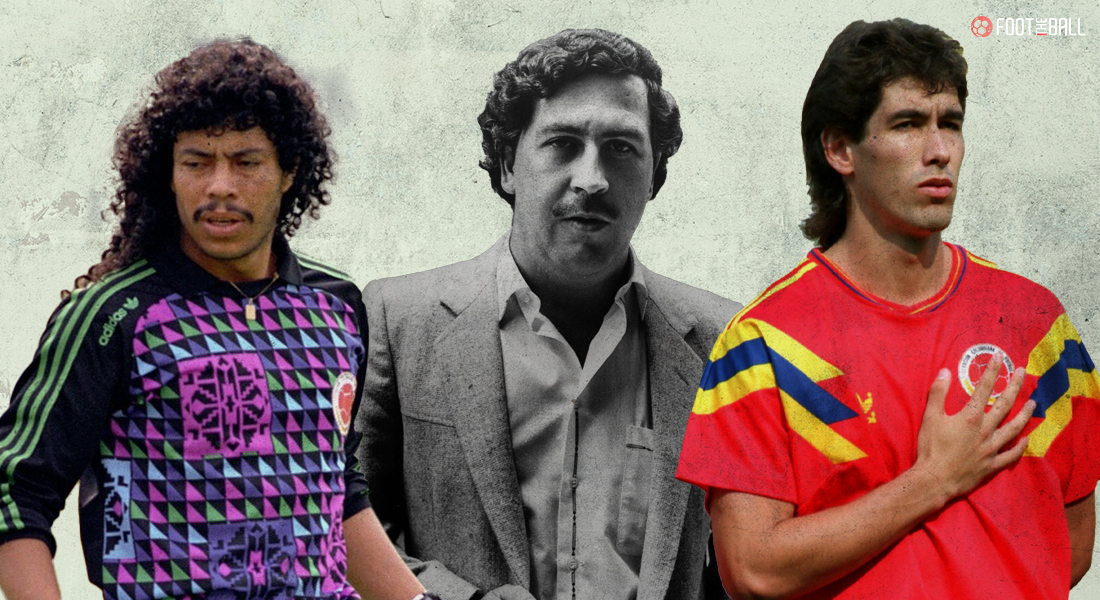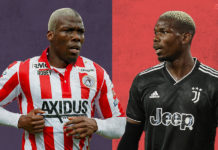Before 1990, Colombia’s best performances at the international football stage was a second-place finish at the 1975 Copa America and a group stage appearance at the 1962 FIFA World Cup where they were eliminated in the group stage after one draw and two losses. However, something would change in the 1980s which would propel Columbian football to the international stage This was the era when Colombia’s top drug lords such as Pablo Escobar began funnelling narco money into the country’s football teams which was earned through the cocaine trade.
This investment paid off big time as Atletico Nacional (Escobar’s club) won the Copa Libertadores in 1989 along with the Copa Interamericana title and were runners up at the Intercontinental Cup the same year.
Two years later they would win their fifth Colombian league title, their first in 10 years.
And Escobar was not alone in showering bags of cash at his favourite sport.
Historial de títulos. 🏆
Atlético Nacional vs América de Cali: pic.twitter.com/UnUKqCdktw
— DATOS NACIONAL (@datosnacional) February 22, 2018
The biggest rival to his Medellin cartel was the Cali cartel whose head Miguel Rodriguez Orejuela also injected his narco money into a team called America de Cali.
Four other clubs were believed to be financed by money earned from the illegal trade.
ATLETICO NACIONAL AND PABLO ESCOBAR
Now there were two reasons why drug lords were attracted to football, the first was their love for the game but the second which was a major one was that they could convert vast amounts of their illegal money into white money through this business.
And it was the infamous Pablo Escobar who started this trend when he took control of two clubs the first Nacional and the second Independiente Medellín.
Through the cash funding, it received the club’s quality improved as it became one of the biggest teams in the country.
The team had the talented goalkeeper Rene Higuita, defenders such as Andres Escobar, Luis Fernandez, Leonel Álvarez, Ricardo Perez, and Alexis García in midfield and the talented John Jairo Tréllez as the team striker alongwith Niver Arboleda Díaz.
Atletico Nacional de Medellin – 1989 Copa Libertadores winners. pic.twitter.com/duXhMD0efO
— A Football Archive* (@FootballArchive) January 10, 2016
These players on their day could rival any other footballing team on the planet.
After a successful season, Columban football was garnering attention and the 1990 World Cup would have been the perfect place to demonstrate this.
The spirits were high as the team had qualified for the World Cup after 28 years.
However, all their hard World would take a backseat after an incident that almost got them banned from the World Cup.
THE KILLING OF ALVARO ORTEGA
In the 1989 domestic season America de Cali and Independiente Medellín played each other in a game that was being officiated by Alvaro Ortega.
The match ended in a 3-2 victory for Cali.
However, Escobar was angry at the refereeing decisions made that night which included chalking off a goal from Carlos Carlos two minutes before the end of the game.
Ortega was selected as the linesman for the return leg which ended 0-0.
But his performance in the first leg had sealed his fate as Escobar had him executed the same evening.
The death caused shockwaves around the club with voices especially in Italy, the host of the 1990 World Cup calling for Colombia to be thrown out of the tournament.
In the end, they are allowed to participate but as a result of Ortega’s killing the rest of the domestic footballing season in the country is cancelled.
Nonetheless, the profile of Colombian soccer continued to rise as they reached the Round of 16 in the World Cup after beating the United Arab Emirates and drawing with eventual winners West Germany.
#WestGermany v #Colombia at the #WC1990. pic.twitter.com/jvtGolIZoh
— OldFootballPhotos (@OldFootball11) April 9, 2021
1994 WORLD CUP AND THE ANDRES ESCOBAR TRAGEDY
Four years later Colombia were back for the World Cup and this time the team was stacked with talent so much that Pele had named the team one of the favourites.
And there were strong reasons that Colombia was rated so highly.
The team consisted of Carlos Valderrama (captain), Freddy Rincon (scorer of the goal against West Germany four years back), Faustino Asprilla along with Escobar and others.
The team had thrashed Argentina 5-0 in a qualifier match for the World Cup and the team were considered to be at least a dark horse.
What followed was an underwhelming achievement as they lost 1-3 to Romania, another dark horse. However, it was the next match that would have ramifications as the hosts United States scripted a shock 2-1 win with Andres Escobar scoring an own goal.
Rest in Peace, Andres Escobar 🙏🇨🇴
The Colombian footballer lost his life on this day 25 years ago pic.twitter.com/LkBsITGhH4
— FIFA World Cup (@FIFAWorldCup) July 2, 2019
They managed to win their final game against Switzerland but would finish bottom of the group.
Five days after their exit Escobar would be shot dead in his hometown of Medellin, which many believe was due to the own goal he scored.
It was said that several of the drug lords had lost a large amount of money while betting on the match and wanted revenge.
This would lead Colombian authorities to act tough against the narco money in soccer which would ultimately lead to the end of narco soccer.
THE LEGACY OF NARCO SOCCER
Though the narco soccer nexus may have ended, the effects are still felt whether positive and negative.
When we talk about narco soccer we need to also remember that Colombia till then was in the category of ‘also ran’ when it came to football.
The team had qualified for one World Cup and did not have a tea that could mix it up with the best.
Narco money changed that whether one likes it or not.
Somos el único equipo del país con dos títulos de Copa Libertadores. #SueñoCumplido #NacionalDaleCampeón pic.twitter.com/Nsxks9hawg
— Atlético Nacional (@nacionaloficial) July 28, 2016
We should also remember that the 1950s was considered to be the golden period for Colombian soccer but the league was formed after breaking away from FIFA which means they were banned from the 1954 World Cup.
This era known as the Eldorado Era perhaps snatched away a generation of football fans who could have seen their national side reach new highs.
So when there was another crop of players that could do it 40 years later the nation became euphoric.
The game brought for at least some time peace, harmony in a nation marred by violence by the very same people who were funding the national football league.
And even though the end of narco soccer meant that the majority of soccer clubs went into bankruptcy it created a belief that the Colombians could get to the biggest stage.
It is not surprising that their first Copa America title would come just seven years after the 1994 World Cup.
Other changes were also made to raise the standard of football as the season calendars were adjusted in line with the European ones.
Private investment also flowed in which provided economic stability for the teams.
Feliz cumpleaños @jamesdrodriguez! 🎉
The 2014 #WorldCup @adidas Golden Boot winner turns 2⃣8⃣ today 🎂 pic.twitter.com/O5mD4wGC6m
— FIFA World Cup (@FIFAWorldCup) July 12, 2019
And in the 2010s another golden generation came that managed to make it to the quarter-finals of the 2014 World Cup with James Rodriguez becoming the first-ever player from Colombia to receive the Golden Boot.
The narco-violence in Colombia did put the country on the brink of destruction but in the process managed to bring Colombia on the footballing map and that’s a fact.




